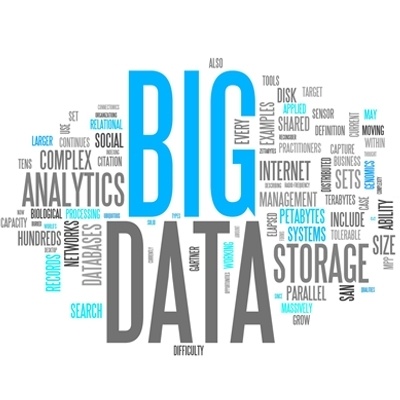What Big Data To Extract From Your LMS And How To Use It
Big Data is everywhere. From social media stats to website analytics. But not all numbers, charts, and percentages are created equal. In fact, only a select few metrics really matter when it comes to eLearning effectiveness. The secret is knowing which data is worthwhile so that you can use it to create actionable goals. In this article, I'll focus on the LMS Big Data you should extract and how to put it to good use.
5 Types Of Big Data To Extract
1. Completion Rates
Are your online learners actually completing the eLearning course? How long does it take them to finish up each task or module? LMS completion rates provide you with the answer to these questions. This Big Data also gives you a good indication of eLearning effectiveness. For example, if a majority of online learners are unable to complete the eLearning course, you may need to reevaluate your eLearning strategy.
2. Online Learner Performance And Progress
Are your online learners breezing through the tasks? Or are they struggling with certain aspects of your eLearning course? Online learner performance and progress metrics offer insight into learning behaviors, experience, and proficiency. This allows you to provide additional resources when necessary, as well as immediate personalized feedback.
3. eLearning Assessment Scores
eLearning assessment scores provide you with measurable data that you can use to improve your eLearning course design. A high percentage of passing grades indicates that your eLearning course is on-target. The opposite is also true. eLearning assessment data also gives you the power to identify online learners' strengths and weaknesses, which you can then use to create personal learning paths. For example, invite your online learners to take a pre-assessment before the eLearning course. Use your findings to choose eLearning activities and modules that suit their needs.
4. Online Learner Surveys
Surveys are one of the most direct and measurable forms of eLearning feedback. Online learners share their honest opinions and recommendations. You use this data to create a plan of action and modify your eLearning design. Surveys also help you determine whether your eLearning course is relevant and relatable for your audience. Does it resonate with them, or are they finding it difficult to connect with your eLearning content?
5. Peer-Based Feedback
This Big Data is more difficult to track. However, it offers a unique perspective of learning behaviors and performance. eLearning forums, social media groups, online group collaboration projects, and learner-generated online content are great sources of peer-based feedback. They allow you to move beyond the LMS analytics to see how online learners respond in social environments. However, you can still conduct surveys and polls to measure this valuable source of data through your LMS platform.
5 Tips To Use LMS Big Data
1. Customize Your eLearning Approach
Every piece of Big Data that you collect helps you personalize your eLearning approach. Online learner satisfaction ratings, completion times, and assessment scores reveal strengths and areas for improvement. As such, you have the opportunity to create eLearning content that offers the most value. For example, Big Data may reveal that online learners lack the necessary motivation. Therefore, you can include gamification elements to reward them for their efforts and motivate them to succeed.
2. Identify Common Threads
All of the graphs, percentages, and feedback ratings are just parts of a larger whole. When you piece them together you'll see trends and patterns that emerge. These are the common threads that run through your Big Data. They can help you pinpoint flaws in your eLearning strategy, as well as your eLearning course's strong suits. If you don't have time to evaluate the data yourself, you might consider outsourcing. There are a number of consultancy firms who can help you analyze your Big Data resources to identify significant trends.
3. Keep It Goal-Centered
Sorting through large quantities of Big Data can be time consuming. However, you can simplify the task by focusing on your goals and objectives. Which metrics matter most? And what is the desired outcome? Concentrate on one measurable learning objective at a time and select only the data sources that are relevant. For example, overall course completion rates and online learner performance provide you with a complete picture, but they aren't necessarily useful for individual evaluation. For that, you'd need to look at user progress reports to identify knowledge and performance gaps.
4. Create A Continual Improvement Plan
eLearning course evaluation is an ongoing process. As such, you need to evaluate your data on a regular basis. In fact, you may want to set a schedule for how often you'll analyze your Big Data and get your eLearning team on board. Delegate tasks and assign every member of your team a metric to focus on. Just make sure that you keep your sensitive data safe. Use effective encryption measures and only grant access to a select group.
5. Choose A Data-Rich LMS
LMS reports and analytics are one of the top features to look for. Identify your learning goals and objectives before you choose your next Learning Management System to ensure that it meets your requirements. For example, some Learning Management Systems feature customizable metrics. This allows you to track training initiatives that align with your business needs and learning gaps. Also, take advantage of "try before you buy" trials to test out the reporting tools.
Mining and managing Big Data takes time, planning, and resources. However, all of your efforts pay off in the form of eLearning personalization and more effective eLearning courses. Especially if you have a robust LMS that features visualization tools to help you identify the gaps and make the most of your eLearning data.
Do you know which metrics to look for in a LMS? Read the article 6 LMS Metrics eLearning Professionals Should Look For to discover the top metrics that will help you track, manage, and measure eLearning effectiveness.








